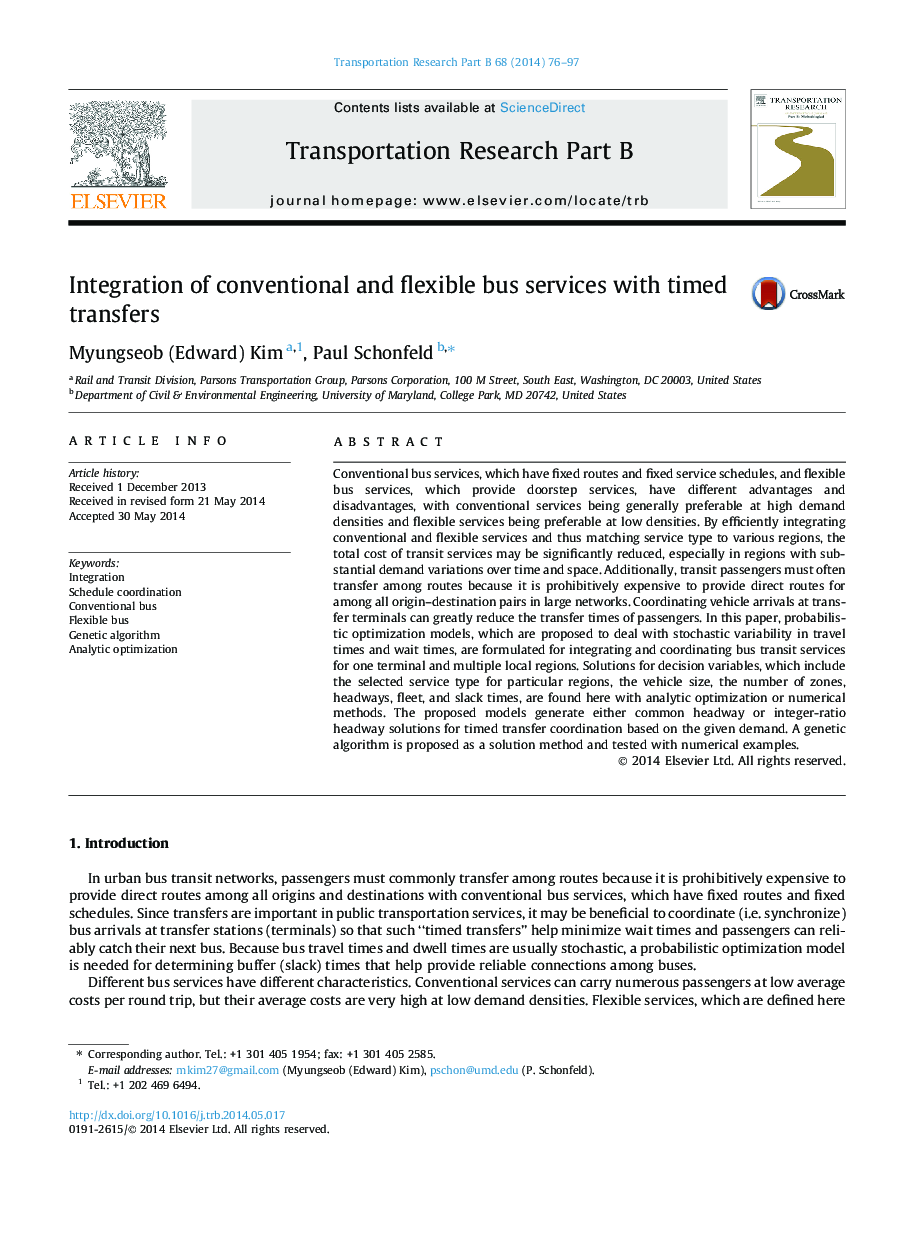| کد مقاله | کد نشریه | سال انتشار | مقاله انگلیسی | نسخه تمام متن |
|---|---|---|---|---|
| 1131994 | 1488975 | 2014 | 22 صفحه PDF | دانلود رایگان |
• Probabilistic models are formulated for optimizing conventional and flexible bus services.
• Conventional and flexible services are integrated with timed transfers.
• Headways and buffers are optimized to coordinate bus arrivals and minimize transfer delays.
• Analytic optimization and a genetic algorithm are combined for finding solutions.
Conventional bus services, which have fixed routes and fixed service schedules, and flexible bus services, which provide doorstep services, have different advantages and disadvantages, with conventional services being generally preferable at high demand densities and flexible services being preferable at low densities. By efficiently integrating conventional and flexible services and thus matching service type to various regions, the total cost of transit services may be significantly reduced, especially in regions with substantial demand variations over time and space. Additionally, transit passengers must often transfer among routes because it is prohibitively expensive to provide direct routes for among all origin–destination pairs in large networks. Coordinating vehicle arrivals at transfer terminals can greatly reduce the transfer times of passengers. In this paper, probabilistic optimization models, which are proposed to deal with stochastic variability in travel times and wait times, are formulated for integrating and coordinating bus transit services for one terminal and multiple local regions. Solutions for decision variables, which include the selected service type for particular regions, the vehicle size, the number of zones, headways, fleet, and slack times, are found here with analytic optimization or numerical methods. The proposed models generate either common headway or integer-ratio headway solutions for timed transfer coordination based on the given demand. A genetic algorithm is proposed as a solution method and tested with numerical examples.
Journal: Transportation Research Part B: Methodological - Volume 68, October 2014, Pages 76–97
